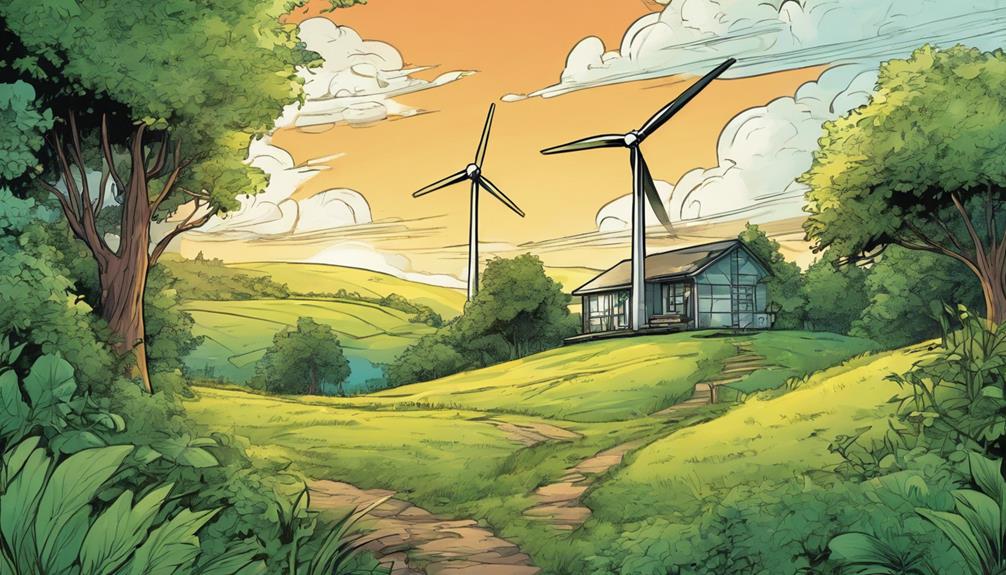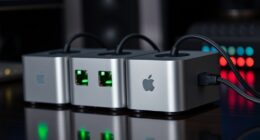By optimizing my home wind turbine's power generation, I can increase its energy output by up to 20%, making a significant impact on my renewable energy goals and reducing my reliance on the grid. To achieve this, I need to take into account key factors like wind speed, rotor size, and turbine efficiency. Proper placement and sizing of the turbine are also essential, as well as regular maintenance to prevent energy losses. By fine-tuning my turbine's design and leveraging advanced technologies, I can enhance its efficiency and output. Now, I'm ready to dive deeper into the specifics of optimizing my home wind turbine's power generation to maximize its potential.
Key Takeaways
- Ensure optimal turbine placement by considering local wind patterns, regulations, and available space to maximize energy output.
- Select the right turbine size based on historical wind data and local conditions to capture energy efficiently.
- Regular maintenance, including rotor blade alignment, is crucial to prevent energy losses and prolong system lifespan.
- Fine-tune turbine design and maintenance by leveraging advanced technologies and data-driven approaches to boost efficiency.
- Analyze historical wind data to estimate energy production and make informed decisions for maximizing power output.
Key Factors in Power Generation
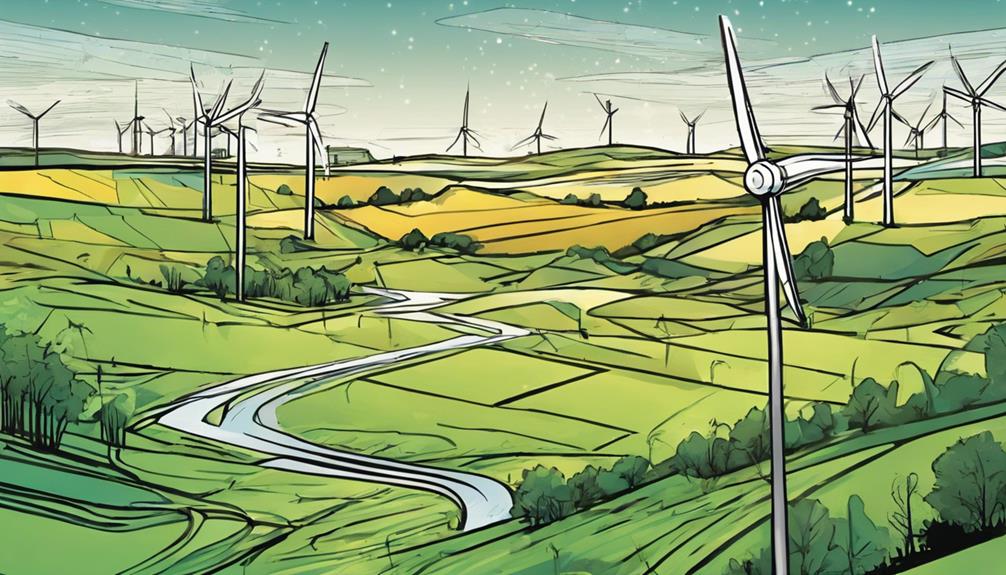
When it comes to harnessing the power of wind energy, several key factors come into play, including wind speed, rotor size, and turbine efficiency, which collectively impact the overall power generation capacity of a home wind turbine.
These factors are essential in determining how much electricity I can generate and feed into the grid. For instance, a turbine with a larger rotor diameter can capture more wind energy, resulting in higher power output.
Similarly, strategic placement of the turbine, considering wind patterns and obstructions, can also boost power generation. Regular maintenance, including alignment of rotor blades, is also crucial to ensure optimal performance.
Turbine Placement and Sizing
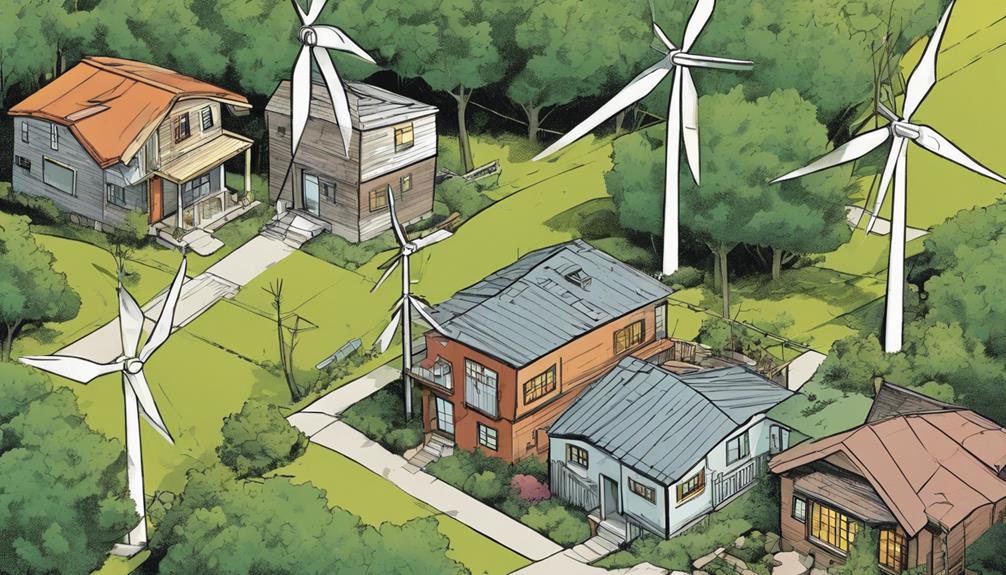
By carefully selecting the appropriate turbine size and strategically placing it on my property, I can greatly impact my home wind turbine's power generation capacity. It's important to factor in the space available and local regulations when choosing a turbine size.
A larger turbine may not always be the best option if it exceeds the allowed size or overwhelms the available space. To maximize power output, I need to:
- Place the turbine in an area with consistent wind speeds, avoiding obstructions like trees or buildings
- Make sure the turbine is installed at a height that takes advantage of wind patterns
- Orient the turbine to face the prevailing wind direction, optimizing energy capture.
Boosting Efficiency and Output
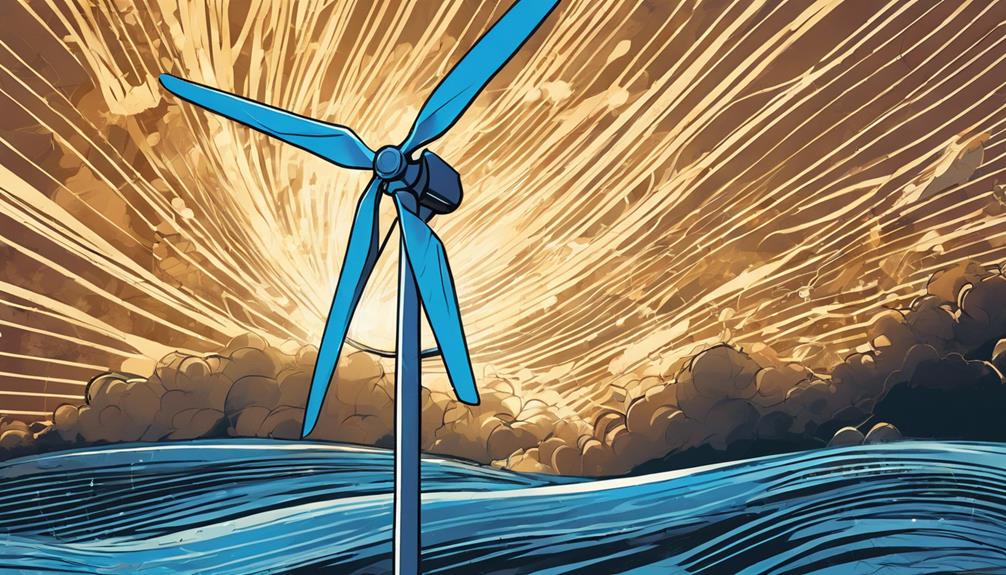
I can greatly enhance my home wind turbine's efficiency and output by fine-tuning its design and maintenance, which involves leveraging advanced technologies and adopting a data-driven approach. For instance, I can utilize improved rotor designs and control systems to increase energy capture.
Regular maintenance, including aligning rotor blades and inspecting electrical components, is also vital. Analyzing historical wind data helps me estimate potential energy output and optimize turbine placement.
Maintenance for Optimal Performance
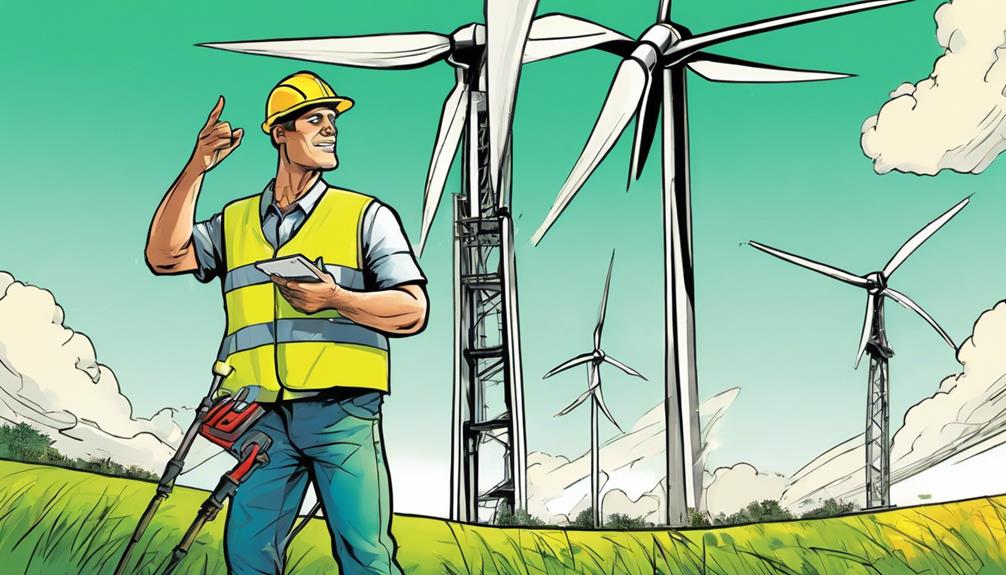
Regular turbine maintenance is crucial to ensuring peak performance, as it helps prevent energy losses and prolongs the system's lifespan. As a homeowner invested in harnessing wind energy, I've learned that regular check-ups are essential to maximizing my turbine's potential.
Here are a few key maintenance tasks I prioritize:
- Rotor blade alignment: Ensuring blades are properly aligned with the wind direction to optimize energy capture.
- Electrical system inspection: Verifying connections and cables are secure and free from damage to prevent energy losses.
- Turbine cleaning: Removing dirt and debris to maintain aerodynamic performance and reduce wear on moving parts.
Estimating Energy Production
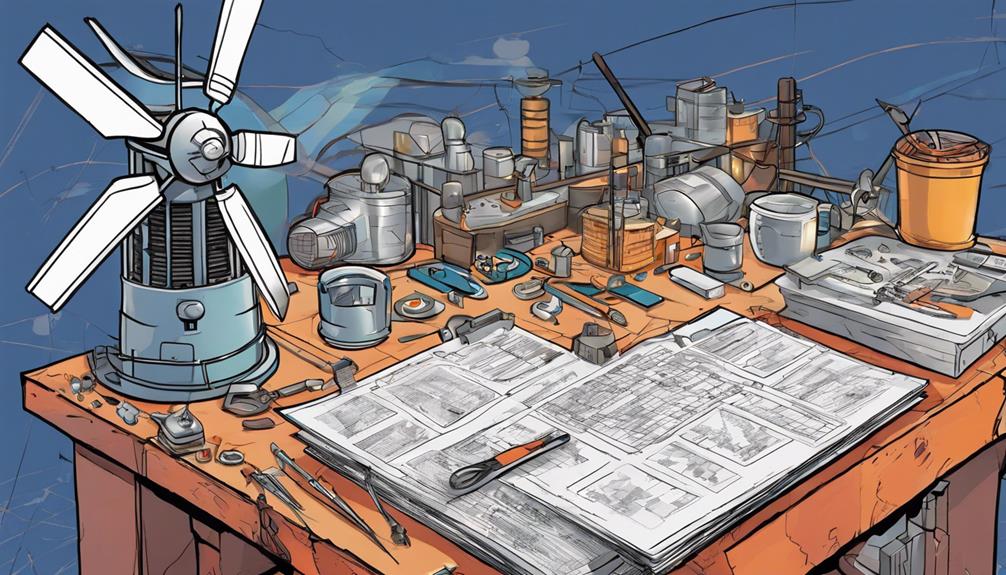
Analyzing historical wind data at my location helps me estimate the potential energy output of my home wind turbine, an essential step in determining whether it can meet my electricity needs. This data provides valuable insights into the average wind speed, direction, and turbulence, which are critical factors in power generation. By understanding these factors, I can choose the right turbine size and optimize its placement for maximum energy output.
| Wind Speed (m/s) | Turbine Efficiency (%) | Estimated Energy Output (kWh) |
|---|---|---|
| 5 | 40 | 1200 |
| 7 | 45 | 2100 |
| 9 | 50 | 3600 |
| 11 | 55 | 5100 |
| 13 | 60 | 6600 |
With this information, I can make informed decisions about my home wind turbine and take steps to maximize its power output.
Frequently Asked Questions
Can Home Wind Turbines Be Connected to the Main Power Grid?
"Yes, I can connect my home wind turbine to the main power grid. In fact, doing so allows me to sell excess energy back to the utility company and offset my electricity bills."
How Do I Determine the Best Turbine Height for My Property?
Like a surgeon selecting the right scalpel, I need to choose the perfect turbine height for my property. To do this, I'll analyze wind patterns, considering obstacles like trees or buildings, to guarantee my turbine captures the most energy.
Are There Any Noise Restrictions for Home Wind Turbines?
'Ah, noise restrictions Yeah, I've got to take those into account When choosing a home wind turbine, I need to check local ordinances and make sure my turbine meets noise level standards to avoid disturbance.'
Can I Install a Home Wind Turbine in an Urban Area?
'I can install a home wind turbine in an urban area, but I need to take into account local noise and zoning regulations, as well as space constraints, to make sure it's feasible and efficient.'
Are There Any Tax Incentives for Installing a Home Wind Turbine?
"Ah, the wind whispers secrets of savings As I consider installing a home wind turbine, I'm thrilled to discover that yes, there are tax incentives available, such as the Renewable Energy Property Tax Credit, to help offset the costs."
What Are the Best Methods for Optimizing Home Wind Turbine Power Generation?
When considering optimal home turbine installation for maximizing power generation, it’s important to first assess the location and wind patterns. Proper positioning and height of the turbine are crucial factors for efficiency. Regular maintenance and monitoring of the system are also essential for ensuring consistent energy production.
Conclusion
As I stand in my own backyard, watching my turbine spin, I'm reminded that harnessing the wind's power is a delicate dance. By mastering the nuances of placement, sizing, efficiency, and maintenance, I've transformed a gentle breeze into a force that powers my home.
With every rotation, I'm one step closer to a sustainable future, and I'm excited to see the impact my small wind turbine can have on the world at large.
